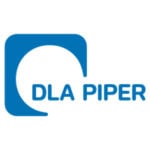-
What forms of security can be granted over immovable and movable property? What formalities are required and what is the impact if such formalities are not complied with?
The main types of security interests for movable property are pledges and transfers or assignments for security purposes. Pledges come in two forms, i.e. regular pledges with no transfer of ownership and irregular pledges with a transfer of ownership and an obligation to return collateral of the same amount and quality. An irregular pledge is assumed where a secured creditor benefits from a right of rehypothecation or similar right of use. Security over immovable property is taken in the form of mortgages and, more often, by way of a pledge or transfer for security purposes of mortgage certificates. Pledges and mortgages are so-called accessory security interests which implies, inter alia, that (i) the valid existence of the pledge or mortgage is dependent on the continuing valid existence of the secured obligations and (ii) the holder of the secured obligations must be identical with the holder of the relevant security interest. In turn, a transfer or assignment for security purposes is a non-accessory security interest where the aforementioned principles do not apply.
The concept of a pledge is frequently used for the following asset categories:
- Certificated shares: The valid creation requires a written pledge agreement and the transfer of possession of the share certificate (with an endorsement for registered shares). The articles of association of the pledged company may establish additional requirements for the creation and/or perfection of a right of pledge.
- Other securities: Uncertificated securities are pledged by way of a written pledge agreement. If the securities are in the form of book entry / intermediated securities either of the following must occur for the creation of a valid security interest: (i) a transfer to an account of the pledgee or (ii) an irrevocable instruction from the pledgor to the intermediary regarding adherence of the intermediary to instructions from the pledgee without consent or cooperation from the pledgor.
- Bank accounts: The valid creation requires a written pledge agreement. Enforceability of the pledge vis-à-vis the account bank further requires notification of the pledge to the account bank.
- Intellectual property rights: The valid creation requires a written pledge agreement. Registration of the pledge in the relevant registers for patents, trademarks and designs is not required for the valid creation but for perfection of the right of pledge.
- Movable assets: In addition to a pledge agreement (for which the written form is not required but strongly recommended) the creation of the security interest requires the depossession of the pledgor. A security interest is not validly created as long as the pledgor has unrestricted access to the relevant assets. This makes the security unattractive in many instances.
An assignment for security purposes is the standard form of security for uncertificated receivables. The assignment must be in writing. Notice to debtors is required for perfection of the assignment and to preclude the debtors from making payments to the assignor.
A transfer for security purposes is regularly chosen for the creation of a security interest with respect to mortgage certificates over real estate. The creation of the mortgage certificate requires an act in the form of a public deed. In addition to a transfer agreement (for which the written form is generally not required but strongly recommended) the valid creation of the security interest requires the transfer of the relevant mortgage certificate (if it is issued in certificated form) or an application to the land registry to record the secured party as a holder of the mortgage certificate (if the mortgage certificate is a register mortgage certificate). If the mortgage certificate is issued in certificated form in the name of a specific creditor and not to the bearer, an endorsement is required. The endorsement must not be in blank.
Failure to comply with the aforementioned requirements to create a valid security interest will result in the security not having been validly created and, therefore, not being enforceable. In turn, non-compliance with perfection requirements may have the effect that security may not be fully enforceable with respect to certain specific third parties only or that such security may have limited effects.
-
What practical issues do secured creditors face in enforcing their security package (e.g. timing issues, requirement for court involvement) in out-of-court and/or insolvency proceedings?
If security is enforced outside of formal proceedings on the basis of a relevant contractual authorisation, Swiss law does not establish major obstacles for secured creditors. A robust and clear authorisation language is particularly important for enforcement by way of appropriation, though. In any event, appropriation without proper accounting of the value of the relevant collateral against the secured obligations is prohibited under Swiss law. Secured creditors could become liable to the provider of the security if the security is not being enforced in good faith. To our knowledge, such proceedings are very exceptional, though.
Enforcing security through debt enforcement proceedings is only available for pledge type of security interests and requires the involvement of the authorities. This may significantly slow down the enforcement process. Also, the statutory default enforcement route of a public auction does often yield a depressed result below the fair value of the collateral. Secured creditors, thus, have a preference for sales outside of an auction process which generally requires the consent of all relevant parties.
In a bankruptcy context, secured creditors benefitting from a regular pledge type of security interest are under a general obligation to hand in the collateral to the insolvency practitioner who would then sell the relevant asset. This results in a significant delay. Exceptions apply (i) for book-entry / intermediated securities with a value which may be determined objectively and (ii) under insolvency regimes for certain regulated entities (such as banks). Again, the standard enforcement route is a public auction but sales outside of an auction process are permissible with the consent of the relevant parties. No obligation to hand in the collateral exists for secured parties benefitting from a transfer or assignment for security purposes or from an irregular pledge.
In a composition proceeding, there would not be an obligation to hand in the collateral to the insolvency practitioner. However, during the moratorium phase, enforcement in the collateral would generally not be permissible. Again, the exceptions referred to above apply.
-
What restructuring and rescue procedures are available in the jurisdiction, what are the entry requirements and how is a restructuring plan approved and implemented? Does management continue to operate the business and / or is the debtor subject to supervision? What roles do the court and other stakeholders play?
Composition proceedings may be used to restructure a debtor as follows:
- Composition proceedings may be used as a mere restructuring moratorium which can be terminated with the approval of the court once the debtor is financially recovered (without the need for a debt-rescheduling or a dividend agreement, see below). There is no cram-down element to this procedure. An individual agreement must be reached with each single creditor or contractual group of creditors that is expected to make a concession.
- Where a mere restructuring moratorium is not sufficient or it is not possible to receive consent from each single creditor or contractual group of creditors, a debtor may choose to offer a composition agreement to its creditors which may take the form of (i) a debt-rescheduling agreement (Stundungsvergleich) where the debtor offers the creditors full discharge of claims according to a fixed time schedule or (ii) a dividend agreement (Prozent- oder Dividendenvergleich) where the debtor offers the creditors only a partial payment of their claims in connection with a creditors’ waiver of the remainder. A combination of both elements is possible. The debtor is not wound up as a consequence of such debt-rescheduling or dividend agreement and once such agreement has been adopted, the debtor regains full power to manage the company’s affairs. Further, it would be conceivable to use a composition agreement with assignment of assets (Nachlassvertrag mit Vermögensabtretung) as a restructuring tool where the business as such but not the legal entity is viable. If so, the business would be transferred to an acquirer with the legal entity of the transferor to be liquidated. A composition agreement must be approved by the creditors which requires the affirmative vote by a quorum of either a majority of creditors representing two-thirds of the total debt, or one-fourth of the creditors representing three-fourths of the total debt. Creditors with privileged claims and secured creditors will not be entitled to vote on the composition agreement (and will not be subject to its terms). After approval by the creditors, the composition agreement requires confirmation by the composition court and, with such approval, becomes valid and enforceable on all (approving, rejecting and non-participating) creditors.
The competent court initiates composition proceedings based on a request typically brought forward by the debtor. First, a provisional moratorium of up to four months will be granted (which can be extended to a maximum of 8 months). In this context, the court can also appoint a provisional administrator. If the court finds that there are reasonable prospects for a successful reorganisation or that a composition agreement is likely to be concluded, it must thereafter grant the definitive moratorium for a period of four to six months (which can be extended to a maximum of 24 months, not including the duration of the provisional moratorium) and appoint an administrator. See section 8 below for the continuing management of the debtor by existing management.
-
Can a debtor in restructuring proceedings obtain new financing and are any special priorities afforded to such financing (if available)?
Yes, this is possible. The administrator’s consent and in case of posting of collateral, court approval will have to be sought and, if granted, the claim for repayment of the financing party is granted a super-priority in the form of an obligation of the estate which will be satisfied ahead of all other claims. Administrators in Switzerland are generally rather cautious to take out new financing, though.
-
Can a restructuring proceeding release claims against non-debtor parties (e.g. guarantees granted by parent entities, claims against directors of the debtor), and, if so, in what circumstances?
A composition agreement generally has effects only between the insolvent debtor and its creditors. As an exception to this rule, a creditor retains its rights against a third party providing credit support for the obligations of the insolvent debtor (e.g., guarantors, surety providers and joint and several debtors) only (i) if such creditor rejects the composition agreement or (ii) in case such creditor approves the composition agreement, if it has previously informed the third party of the upcoming vote on the composition agreement and has further offered to sell its claim for face value to the relevant third party.
Director’s liability claims will not be formally released in Swiss restructuring proceedings. That said, where the debtor continues to exist as a legal entity following completion of a restructuring, it is very rare that creditors (other than shareholders) have a claim against directors of the debtor. Where the restructuring leads to dissolution of the debtor, it is more common for creditors to have a claim against the former directors resulting from directors’ liability. However, such claims are first being pursued by the liquidator for the benefit of the estate. Individual creditors may only pursue their claims after the majority of the creditors on behalf of the estate have decided not to pursue the respective claims.
-
How do creditors organize themselves in these proceedings? Are advisory fees covered by the debtor and to what extent?
In complex cases, the court may appoint a creditors’ committee (Gläubigerausschuss) during a composition moratorium (i.e., at the outset of composition proceedings). In practice, however, this is quite exceptional. The creditor’s committee has the task of supervising the administrator, making recommendations to the administrator and approving (in place of the composition court) the conclusion of certain transactions such as divesting, encumbering or pledging fixed assets, granting guarantees or gratuitous dispositions.
Members of the creditors’ committee are compensated. Such compensation is usually calculated on a time-spent basis and paid out with priority. The members of the committee must be representatives of the different creditor groups (e.g. employees, finance creditors and trade creditors).
There is no specific legal basis for a creditors’ committee to retain advisers. On this basis and in our practical experience, creditors’ committees do not seek external advice. It is, however, possible for the administrator to retain advisers and share their findings with the creditors’ committee. Such advisory fees qualify as so-called estate obligations (Masseverbindlichkeiten) which are satisfied in advance and in full prior to all other creditors.
-
What is the test for insolvency? Is there any obligation on directors or officers of the debtor to open insolvency proceedings upon the debtor becoming distressed or insolvent? Are there any consequences for failure to do so?
On 1 January 2023, a general revision of Swiss corporate law, which has come, inter alia, with a number of changes aimed at clarifying certain elements in relation to insolvency triggers and bankruptcy filing obligations, entered into force. Such clarification complements the major revision of Swiss insolvency law which entered into force in 2014 and had introduced a new, facilitated debt moratorium regime. The revision introduced a number of amendments relating to the duties of the board of a company in financial distress to implement an “early warning system” in case of illiquidity and impending insolvency.
Under Swiss law, the following terms must be distinguished:
- Illiquidity (Zahlungsunfähigkeit): A Swiss corporate debtor is illiquid pursuant to Art. 191 of the Swiss Federal Act on Debt Enforcement and Bankruptcy (DEBA) if it is no longer in a position to pay its debts as and when they fall due. Hence, this test focuses on the solvency of the corporation.
- Capital loss (Kapitalverlust): A Swiss corporate debtor has a capital loss if the most recent annual accounts indicate that the assets less the liabilities no longer cover half of the sum of the share capital, statutory capital reserve not repayable to shareholders and statutory profit reserve.
- Over-indebtedness (Überschuldung): A Swiss corporate debtor is over-indebted within the meaning of Art. 725b para. 1 of the Swiss Code of Obligations (CO) if its assets are no longer sufficient to cover its liabilities. This test is balance sheet based. That said, over-indebtedness may result from illiquidity where, as a result, the going concern assumption is no longer sustainable and, thus, accounting will have to be made at liquidation values.
Under the revised CO, in case there is a risk of imminent illiquidity (drohende Zahlungsunfähigkeit), the board has a duty to monitor the company’s solvency and has an obligation to adopt measures to ensure liquidity, or to propose such measures to the shareholders’ meeting if it is within the latter’s competence (e.g. capital increase) (Art. 725 para. 1 CO). Alternatively, the board must consider an application for a moratorium. However, (looming) illiquidity is not an automatic trigger for insolvency proceedings.
In case of a capital loss (Kapitalverlust), the directors must take measures to eliminate such capital loss and, if necessary, take further restructuring measures (Art. 725a para. 1 CO). The convening of an extraordinary shareholders’ meeting is only necessary if such measures fall within its competence.
The highest executive body of a Swiss corporate debtor is generally obliged to file for bankruptcy proceedings in case of over-indebtedness within the meaning of Art. 725b CO. Certain exceptions apply where a deep subordination exists (cf. section 11 below). Furthermore, the revised CO explicitly states that the board may abstain from notifying the court in case of an over-indebtedness if (i) there is well-founded prospects that the over-indebtedness will be eliminated within due course, however by no later than 90 days as of the date on which audited financial statements are available, and (ii) creditors’ claims are not jeopardised any further. The general assembly of a Swiss corporate debtor may further resolve to apply for the liquidation through a bankruptcy proceeding if the company is illiquid pursuant to Art. 191 DEBA but no strict obligation to initiate such proceedings in case of illiquidity currently exists under Swiss corporate law. Furthermore, a creditor may directly apply for the opening of bankruptcy proceedings if the corporation has ceased to make payments pursuant to Art. 190 DEBA.
There is no specific trigger event for a debtor to request the opening of composition proceedings although (looming) illiquidity and/or over-indebtedness will often exist. In addition, both creditors entitled to request the opening of bankruptcy proceedings and the bankruptcy court may request the opening of composition instead of bankruptcy proceedings.
Please refer to section 15 below for the consequences of a breach of obligations by the highest executive body of a Swiss corporation.
-
What insolvency proceedings are available in the jurisdiction? Does management continue to operate the business and / or is the debtor subject to supervision? What roles do the court and other stakeholders play? How long does the process usually take to complete?
There are two main types of formal insolvency and restructuring proceedings in Switzerland: bankruptcy (i.e., liquidation) proceedings (Konkursverfahren) and composition proceedings (Nachlassverfahren).
In bankruptcy proceedings, all business activities of the insolvent debtor are generally discontinued and the management can no longer validly act on behalf of such debtor. All acts necessary in the context of the bankruptcy proceedings are subsequently carried out by the competent bankruptcy authorities and the receiver in bankruptcy. In contrast, an insolvent debtor may generally continue its business in the context of composition proceedings. While the executive bodies continue to be in charge of business operations, the insolvent debtor is typically placed under supervision by an administrator who needs to approve certain transactions and can issue instructions of both general and specific nature. The court can further limit the management rights of the insolvent debtor.
The opening of both proceedings must be ordered by the court. The court’s further involvement in bankruptcy proceedings is generally limited whereas its role is more prominent in composition proceedings where a number of actions and procedural steps must be approved or granted by the court. Creditors benefit from various rights in both types of proceedings, including inspection rights, rights to challenge certain acts of the insolvency practitioner and participation rights at court hearings.
The duration of insolvency proceedings largely depends on the complexity of the case. Composition moratoria which are terminated due to a successful restructuring will typically take considerably less time (anywhere between a few months and two years) than bankruptcy proceedings in relation to large companies which involve numerous jurisdictions and entail a variety of complex legal issues (which may easily last up to five years or longer).
Certain types of companies, especially banks, securities dealers, insurance companies and other players in the financial industry, are subject to special insolvency regimes. On 1 January 2024, a special insolvency regime entered into force enabling a restructuring of an insolvent insurance company rather than the direct opening of bankruptcy proceedings. Such revision aimed to protect the interests of the insured parties.
-
What form of stay or moratorium applies in insolvency proceedings against the continuation of legal proceedings or the enforcement of creditors’ claims? Does that stay or moratorium have extraterritorial effect? In what circumstances may creditors benefit from any exceptions to such stay or moratorium?
The opening of bankruptcy proceedings has the effect that all pending debt enforcement proceedings against the insolvent debtor are stopped and no new debt enforcement proceedings may be commenced. This restriction does not apply (i) to claims arising after the opening of bankruptcy and (ii) where the secured creditor enforces into collateral posted by a third party for the debts of the insolvent debtor.
Further and in general, all pending civil law proceedings to which the insolvent debtor is a party are automatically stayed upon the opening of bankruptcy and are only resumed once the schedule of admitted claims has been published. During such stay, the statute of limitation does not continue to run. The stay in principle extends to all civil law proceedings irrespective of the (Swiss or foreign) venue. While the Swiss bankruptcy authorities have no meaningful way of enforcing the stay abroad, they may refuse to admit claims against the insolvent debtor resulting from such foreign proceedings to the schedule of claims.
The opening of moratorium proceedings has very similar effects, i.e. all debt enforcement proceedings are stopped and all pending non-urgent civil law proceedings are stayed. As an exception, creditors whose claims are secured by real estate may continue with the debt enforcement but are precluded from foreclosing on the real estate.
Please refer to section 1 above for enforcement options for secured creditors.
-
How do the creditors, and more generally any affected parties, proceed in such proceedings? What are the requirements and forms governing the adoption of any reorganisation plan (if any)?
In bankruptcy proceedings, all creditors will be involved and the company will ultimately be wound-up at the end of such proceedings. The estate is administered by the receiver in bankruptcy who is a state official. The opening of bankruptcy proceedings is announced in the Swiss Official Gazette of Commerce asking the creditors to file their claims within one month. The one month filing period is not to be understood as a bar date under Swiss law. Rather, claims may generally be filed until the end of the proceedings. However, any claims filed late would not participate in interim dividend distributions which have already occurred at the time of filing and a creditor making a late filing may have to reimburse the bankruptcy estate for costs triggered in connection with a late filing. Upon filing of the claims by the creditors after the creditors’ call, the claims are examined by the receiver in bankruptcy who then draws up a schedule of claims (Kollokationsplan) listing all creditors with their respective claims and privileges, if any. Creditors whose claims have been rejected or not allocated to the requested class or whose encumbrance has not been considered correctly, may file an action to contest the schedule of claims or the admission or class allocated to another creditor (Kollokationsklage) within 20 calendar days the schedule of claims has been made available for public inspection. Within the course of bankruptcy proceedings, the overall assets of the company will be liquidated and the debts of the company will be assessed by the bankruptcy officer. Once all assets have been realised and the schedule of claims and the distribution plan become enforceable, the liquidation proceeds are distributed to the company’s creditors according to a statutory order of priority (see section 11 below), i.e. no reorganisation plan will be adopted.
In ordinary bankruptcy proceedings, creditors are invited to a first creditors’ meeting, at which the creditors are informed about the bankruptcy estate and the known creditors. The first creditors’ meeting may appoint a private bankruptcy administration instead of the state bankruptcy office as well as a creditors’ committee. In summary proceedings (which are the rule in practice), there are typically no creditors’ meetings and there is no option to appoint a private bankruptcy administration. Where a decision of the creditors is required, the bankruptcy officer will typically send circular letters to creditors requesting their approval of certain decisions.
In composition proceedings, the administrator will publish a creditors’ call during the definitive moratorium requesting all creditors to file their claims within one month. In the course of negotiations of a composition agreement, the administrator convenes a creditors’ meeting as soon as a draft composition agreement is proposed. Please see section 3 for the possible composition agreements, noting that a composition agreement with assignment of assets cannot be viewed as reorganisation plan as it ultimately leads to the liquidation of the company. Only creditors who have filed their claims in time are given the right to vote in the creditors’ meeting. Other than the right to vote in the creditors’ meeting, creditors are generally not able to influence composition proceedings.
-
How do creditors and other stakeholders rank on an insolvency of a debtor? Do any stakeholders enjoy particular priority (e.g. employees, pension liabilities, DIP financing)? Could the claims of any class of creditor be subordinated (e.g. recognition of subordination agreement)?
Secured claims are satisfied directly out of the net proceeds from the realisation of the collateral. Should the proceeds not be sufficient to satisfy the claim of the secured creditor, the remainder of the claim ranks as an unsecured and non-privileged claim.
Unsecured claims are divided into three classes. Insofar as corporate debtors are concerned, the first class consists of certain employee claims up to a maximum amount of currently CHF 148,200 per employee as well as certain pension related social security claims, the second class includes claims of various contributions to social insurances and all other claims are comprised in the third class. Claims in a lower ranking class will only receive dividend payments once all claims in a higher ranking class have been satisfied in full and claims within a class are treated on a pari passu basis.
Under Swiss law, there is no specific financing instrument for companies in financial distress such as DIP financing. However, in the course of composition proceedings, new liabilities incurred during a moratorium with the administrator’s consent qualify as so-called estate obligations which are satisfied in advance and in full prior to all other creditors. This being said, the administrator will only give his consent to such liabilities if the rights of the existing creditors are not jeopardised. Such privilege will also be maintained in case of a subsequent bankruptcy.
Subordination may result from a contractual subordination or an equitable subordination:
- Contractual subordination comes in two forms, i.e. (i) in the form of a deep subordination (Rangrücktritt) within the meaning of Art. 725b para. 4 no. 1 CO where the creditor has agreed to come ‘last in row’ in the amount of the over-indebtedness, provided that the subordination of the principal and interest applies for the duration of the over-indebtedness and (ii) in the form of a bilateral subordination (Nachrang) which only benefits selected creditors. The treatment of the former category is well established under Swiss law whereas the treatment of the latter category is disputed in an insolvency context.
- The concept of equitable subordination is being discussed primarily for shareholder and certain other affiliated parties’ loans where funds were made available to a corporate debtor in a financial distress situation where no other third party financing would have been available. If admitted, an equitable subordinated claim would be treated in the same way as a claim subject to deep subordination.
-
Can a debtor’s pre-insolvency transactions be challenged? If so, by whom, when and on what grounds? What is the effect of a successful challenge and how are the rights of third parties impacted?
The following avoidance actions are available to the relevant insolvency practitioner or a creditor (if the relevant rights have been assigned to it):
- Avoidance of gratuitous transactions targets, in particular, all gifts and all dispositions made by the debtor without any or without adequate consideration;
- avoidance for over-indebtedness targets the granting of a security interest for existing debts without a prior contractual obligation, the settlement of a monetary claim in a manner other than by usual means of payment and the payment of a debt which was not yet due, in each case provided that the recipient is unable to prove that it was unaware and must not have been aware of the debtor’s over-indebtedness at the time the transaction was carried out; and
- avoidance for intent targets dispositions and other acts made by the debtor with the intent to disadvantage its creditors or to prefer certain of its creditors to the detriment of other creditors and if the privileged creditor knew or should have known of such intent.
Targeted transactions must have occurred during certain look-back periods: Avoidance of gratuitous transactions and avoidance for over-indebtedness is available where a relevant act has occurred during the year prior to the opening of bankruptcy proceedings, the granting of a moratorium or the seizure of assets. A five years period applies to avoidance for intent. Following the opening of bankruptcy proceedings or the conclusion of a composition agreement with assignment of assets, the avoidance claims must be pursued within three years (statute of limitations).
For all challenges, it is further required that the challenged transaction has caused damages to other creditors of the debtor. In addition, it is noteworthy that the rules regarding avoidance for intent as well as avoidance of gratuitous transactions provide for an inversion of the burden of proof whenever these transactions are entered into by related parties of the debtor (including affiliated entities).
If all requirements are met, the court orders the defendant to return the specific assets to the estate. If this is no longer possible, the court may order the defendant to compensate the estate in cash. The defendant has a return claim for its own performance which is to be performed in kind as an obligation of the estate or, if no longer possible, by admittance of an unsecured and non-privileged insolvency claim.
-
How existing contracts are treated in restructuring and insolvency processes? Are the parties obliged to continue to perform their obligations? Will termination, retention of title and set-off provisions in these contracts remain enforceable? Is there any ability for either party to disclaim the contract?
In case of bankruptcy proceedings, there are certain types of contracts that are generally terminated automatically under applicable substantive contract law (e.g. mandates governed by Swiss law). For other types of agreements, the applicable substantive contract law or the specific contract may provide for a termination right in case of bankruptcy. Automatic termination or termination rights are generally upheld in a Swiss bankruptcy. A contract which has not been terminated continues to exist as a matter of Swiss bankruptcy laws. If so, the receiver in bankruptcy may choose to perform the bankrupt’s obligations under a so-called synallagmatic agreement (cherry-picking right). If the receiver in bankruptcy decides to perform the bankrupt party’s obligations to secure performance by the other party, these obligations qualify as so-called estate obligations which are satisfied in advance and in full prior to all other creditors. Special rules apply to long-term contracts. In case no cherry-picking right has been exercised by the receiver in bankruptcy, even if they are not terminated upon the opening of bankruptcy procedures, future claims arising under such long-term contracts will only be admitted to the schedule of claims if they cover the period until the next possible termination date (calculated from the opening of bankruptcy) or until the end of the fixed duration of a contract. In addition, the cherry-picking right can be exercised for future obligations only. It is heavily debated under Swiss law whether an obligation of the non-affected party to perform agreements which have not been terminated and where no cherry-picking right has been exercised continues to exist.
In composition proceedings, contractual relationships between the debtor and its counterparties generally continue to be effective during the moratorium unless terminated ex lege or based on a contractual termination right (which, again, would generally be upheld). For contracts which have not been terminated, the administrator has the authority to order conversion of a performance owed by the debtor into a monetary claim of corresponding value which will then become subject to the terms of the composition agreement. If no such conversion is ordered, non-monetary claims would generally have to be performed by the debtor. Furthermore, the debtor may terminate long-term contracts without respecting the contractual notice periods during the moratorium against full indemnification of the counterparty (but only as an unsecured and non-privileged insolvency claim) if the continuing existence of these contracts would jeopardise the restructuring as a whole. The administrator’s consent is required for such a termination. In the absence of guidance from the courts on the interpretation of the requirements for the exercise of the statutory termination right, administrators are, however, rather reluctant to exercise such statutory termination right.
Set-off rights generally continue to be available in insolvency proceedings, subject, however, to certain restrictions which may, in particular, prohibit set-off of pre-insolvency with post-insolvency claims. Retention of title arrangements are not typically effective in an insolvency scenario of a Swiss debtor unless the very strict rules, including registration requirements for retention of title arrangements under Swiss law have been properly followed (which is the exception rather than the rule).
-
What conditions apply to the sale of assets / the entire business in a restructuring or insolvency process? Does the purchaser acquire the assets “free and clear” of claims and liabilities? Can security be released without creditor consent? Is credit bidding permitted? Are pre-packaged sales possible?
In bankruptcy proceedings, the requirements for the sale of assets depend on the type of proceedings. While in ordinary proceedings the receiver in bankruptcy must generally follow more strict rules with regard to the realisation of assets, in particular where it is envisaged to realise an asset of the insolvent debtor by means of a bilateral sale outside of an auction process, there is larger discretion in case of summary bankruptcy proceedings. In each case and with the exception of emergency sales, the secured creditors must consent to such asset not being sold by public auction and all creditors must be given the possibility to submit a higher offer for real estate property or other assets of high value. Sales generally occur on an ‘as is where is’ basis and, thus, the acquired asset would not necessarily be free of claims and liabilities. No representations and warranties are typically given by the receiver in bankruptcy. Upon completion of the sale, the security will be released. Credit-bidding is available to a secured creditor only.
In composition proceedings, the insolvent debtor typically requires both the consent from the administrator and the competent court (or, if one has been formed, the creditors’ committee) if it wishes to sell its assets or even the entire business during the moratorium phase. The administrator’s consent is sufficient for the sale of current assets, though. Court approval can also be sought at the outset of the proceedings which allows a pre-packaged restructuring (including a pre-packaged sale to an independent third party) under Swiss law. The consent of a secured creditor will be required for a release of a security interest. The terms of the disposal, including representations and warranties, will have to be negotiated between the seller and the purchaser. Again, credit-bidding is only available to a secured creditor and subject to contract.
-
What duties and liabilities should directors and officers be mindful of when managing a distressed debtor? What are the consequences of breach of duty? Is there any scope for other parties (e.g. director, partner, shareholder, lender) to incur liability for the debts of an insolvent debtor and if so can they be covered by insurances?
Under Swiss corporate law the highest executive body of a company is responsible for, inter alia, the overall management and strategic positioning of the company, the financial accounting and control, the overall supervision of the management and compliance with laws and regulations generally. Such duties become particularly relevant in a distress scenario in which case a certain shift of responsibilities from management to the highest executive body occurs. Duties and obligations will have to be interpreted in the light of the financial status of the company. In addition, the overarching duties (duty of care, fiduciary duty, equal treatment of shareholders) and certain specific obligations apply in a distress situation:
- In case there is a risk of imminent illiquidity, the board of directors has a duty to monitor the company’s solvency and has to adopt measures to ensure liquidity, or propose such measures to the shareholders’ meeting if it is within the latter’s competence.
- If the latest annual financial statement shows that half of (i) the share capital, (ii) the statutory capital reserve not repayable to shareholders, and (iii) the statutory profit reserve of a company are no longer covered by its assets less liabilities (capital loss), the directors must take measures to eliminate such capital loss and, if necessary, take further restructuring measures. The convening of an extraordinary shareholders’ meeting is only necessary if such measures fall within its competence.
- If the board of directors of a Swiss corporate debtor has reason to believe that the company is over-indebted, it must draw up interim financials without delay, which must be audited by the company’s statutory auditors. Such interim financials will have to be prepared on a stand-alone basis and the statutory accounting rules are pertinent. If such interim financials show that the company is over-indebted at both going concern values and liquidation values, the board of directors of the company must, as a rule, file for bankruptcy without delay.
Sound management may require the initiation of composition proceedings before an over-indebtedness situation exists in case the company is in the state of (looming) illiquidity. Such action may be warranted where an out-of-court restructuring does not appear to be viable and/or where creditor action is expected which may frustrate the attempts for an out-of-court restructuring.
If such duties are not complied with, executive bodies may be exposed to civil law director’s liability where the wilful or negligent breach of the director’s duties has caused damages to the company or, in certain constellations, the creditors and where there was a causal nexus between the breach and the damage. Where executive bodies failed to timely notify the court of an over-indebtedness situation, damages typically cover the increase of loss that occurred between the date the executive bodies failed to act and submit a notification of over-indebtedness with the competent court and the date bankruptcy proceedings were effectively opened. Further liability risks may arise in the context of transactions that are subject to avoidance (see section 12 above).
In addition, executive bodies may be exposed to the risk of criminal liability if they fail to adhere to their statutory duties and obligations. In particular, such risks exist in case of failure to properly keep corporate books and accounts, mismanagement, where bankruptcy proceedings were caused fraudulently, in case of a fraudulent reduction of assets to the detriment of creditors or in case of creditor preference.
Finally, executive bodies of a Swiss corporate debtor may become liable for certain social security contributions and withholding tax obligations which were not paid prior to the initiation of insolvency proceedings. Furthermore, the parent company of an insolvent corporate debtor may become liable for claims of creditors of the latter in exceptional circumstances, namely under the theories of piercing the corporate veil and/or based on a trust based liability. Requirements established in court precedents and legal doctrine are fairly strict, though.
Partners/shareholders and lenders are not typically exposed to the risk of incurring a liability for the debts of an insolvent debtor unless they have assumed the role of a de facto shadow executive of a Swiss corporate debtor in which case they may become exposed to the risk of director’s liability (see above). That said, court precedents hold that it is generally not sufficient to be qualified as a shadow director where a contracting party or lender merely acts to protect its contractual position. Partners/shareholders may also become liable if they have created a situation where third parties may reasonably rely on the partner/shareholder coming up for the insolvent party’s debts (reliance-based liability).
While they do not directly incur a liability for the debts of an insolvent debtor, the company’s statutory auditors may become liable for damages similar to a company’s director if they do not notify the court if the company is over-indebted and the board of directors fails to notify the court itself (see above).
A Swiss company may take out and pay for a so-called Director’s and Officers’ Liability Insurance (D&O insurance) for its directors and officers. The company’s statutory auditors take out an individual professional liability insurance.
-
Do restructuring or insolvency proceedings have the effect of releasing directors and other stakeholders from liability for previous actions and decisions? In which context could the liability of the directors be sought?
No. Quite to the contrary, there is an increased likelihood that director’s liability claims are scrutinised in an insolvency context. That said, such claims will typically not be pursued where a restructuring has been achieved although no formal release will occur.
-
Will a local court recognise foreign restructuring or insolvency proceedings over a local debtor? What is the process and test for achieving such recognition? Does recognition depend on the COMI of the debtor and/or the governing law of the debt to be compromised? Has the UNCITRAL Model Law on Cross Border Insolvency or the UNCITRAL Model Law on Recognition and Enforcement of Insolvency-Related Judgments been adopted or is it under consideration in your country?
Swiss insolvency proceedings are intended to apply universally for local debtors (i.e., debtors incorporated in Switzerland). Swiss authorities would, thus, not recognise and give effect to any foreign main insolvency proceedings opened against a Swiss corporate debtor outside of Switzerland. In particular, it should be noted that Switzerland is not an EU Member State and, thus, the centre of main interest (COMI) principle laid down in EU Regulation 2015/848 on insolvency proceedings is not applicable to debtors incorporated in Switzerland. Furthermore, for purposes of recognition, the governing law of the compromised debt is irrelevant. That said, certain foreign restructuring proceedings (including a UK scheme of arrangement) may not be viewed as insolvency type of proceedings from a Swiss perspective but rather as court rulings or contractual matters where recognition may be available. This will have to be looked at on a case-by-case basis.
Switzerland has not adopted the UNCITRAL Model Law on Cross Border Insolvency and the UNCITRAL Model Law on Recognition and Enforcement of Insolvency-Related Judgments and it is neither under consideration to do so. However, Swiss international insolvency laws have recently been amended in a bid to facilitate cross-border insolvencies, by lowering the previously strict requirements for recognition of foreign insolvency proceedings in Switzerland (cf. section 19 below).
-
For EU countries only: Have there been any challenges to the recognition of English proceedings in your jurisdiction following the Brexit implementation date? If yes, please provide details.
N/A
-
Can debtors incorporated elsewhere enter into restructuring or insolvency proceedings in the jurisdiction? What are the eligibility requirements? Are there any restrictions? Which country does your jurisdiction have the most cross-border problems with?
Main Swiss restructuring or insolvency proceedings would not be available to a debtor incorporated elsewhere. Where a foreign debtor is undergoing restructuring or insolvency proceedings outside of Switzerland, a foreign insolvency official would not be authorised to take possession of, or otherwise seek enforcement in, any Swiss assets of the debtor. This notwithstanding, in case a debtor incorporated outside of Switzerland operates a branch in Switzerland, Swiss insolvency proceedings may be opened against such debtor at the place where the Swiss branch is located (Niederlassungskonkurs). Such proceedings, however, are limited to obligations incurred by the branch as direct counterparty (Art. 50 DEBA). For the sake of completeness, it should further be noted that there are discussions in Swiss legal doctrine as to whether main Swiss proceedings should be available for a non-Swiss incorporated entity in exceptional circumstances where main insolvency proceedings in the jurisdiction at the registered seat are either not available or impracticable (high threshold) and there is at the same time a close nexus to Switzerland (such as a debtor’s COMI in Switzerland). We are, however, not aware of any precedents where main proceedings were opened in Switzerland in application of this theory.
As a consequence of the principle of territoriality, insolvency proceedings in relation to a debtor having its registered seat outside of Switzerland have no effect (in particular with regard to Swiss-located assets of such debtor) unless they have been recognised in Switzerland. Foreign insolvency proceedings can be recognised in Switzerland if the following requirements are fulfilled: (i) the insolvency decree must have been rendered in the state of the debtor’s domicile or where the debtor has its COMI outside of Switzerland; (ii) the petition for recognition was made by the insolvency administrator, by the debtor itself or by a creditor; (iii) the insolvency decree must be enforceable in the state where it was rendered; and (iv) the foreign insolvency proceedings must not violate Swiss public policy and the fundamental principles of Swiss procedural law. Since 2019, such recognition requirements no longer include reciprocity (which previously often constituted a recognition obstacle).
The regime regarding the recognition of foreign insolvency proceedings has been revised in 2019 (cf. previous paragraph and section 17 above). Prior to such revision, the opening of Swiss ancillary proceedings was mandatory in case of bankruptcy. In contrast, under certain circumstances, no ancillary Swiss proceedings were necessary in case of restructuring-type of proceedings. Under the revised laws, Swiss courts may now waive the opening of ancillary proceedings also in case of a recognition of a foreign bankruptcy decree, provided that (i) a request to this effect is made by the foreign bankruptcy administration, (ii) there are no privileged Swiss creditors or creditors which are secured by collateral located in Switzerland and (iii) the claims of non-privileged and unsecured creditors in Switzerland are adequately taken into account in the foreign proceedings and such creditors were granted an opportunity to be heard. In case ancillary proceedings are waived, the foreign insolvency administration is authorised to carry out all actions falling in its competence pursuant to the applicable foreign law in Switzerland, including, most notably, the transfer of assets of the foreign debtor located in Switzerland to the foreign insolvency estate. In this context, the foreign insolvency administration must ensure that it is at all times compliant with all applicable Swiss laws. In particular, it must not perform any official acts, use any means of coercion or adjudicate on any disputes.
If, on the other hand, ancillary proceedings are opened, only certain claims may be included in the schedule of admitted debts, i.e. (i) claims secured by collateral located in Switzerland, (ii) unsecured but privileged claims of creditors having their domicile in Switzerland and (iii) claims for liabilities on account of a branch of the debtor recorded in the commercial register in Switzerland. Any remaining balance after the satisfaction of such claims is remitted to the foreign bankruptcy estate. Such transfer, however, requires the prior recognition of the foreign schedule of claims in Switzerland whereby the Swiss courts verify, in particular, whether the creditors domiciled in Switzerland were fairly treated in the (foreign) procedure and granted an opportunity to be heard.
There is no specific country which Switzerland has particular cross-border problems with. However, there is a trend for Swiss subsidiaries of international groups to use other foreign restructuring tools such as a UK scheme of arrangement or a restructuring plan. Moreover, Swiss companies are sometimes included in US Chapter 11 proceedings in the context of a world-wide restructuring of the group, although such proceedings are not recognised in Switzerland.
-
How are groups of companies treated on the restructuring or insolvency of one or more members of that group? Is there scope for cooperation between office holders? For EU countries only: Have there been any changes in the consideration granted to groups of companies following the transposition of Directive 2019/1023?
Swiss insolvency law does not recognise the concept of substantive consolidation. Hence, separate insolvency or restructuring proceedings will have to be initiated for each member of a corporate group (which, itself, cannot be the subject of insolvency proceedings). That said and pursuant to Art. 4a DEBA, Swiss insolvency authorities are held to coordinate their actions to the extent possible in a group insolvency. As part of such coordination it would, inter alia, be possible to appoint one sole administrator in the insolvency proceedings of affiliated companies within the same group. Moreover, Art. 4a DEBA allows that the insolvency courts and authorities competent for one group entity are assigned exclusive jurisdiction for all affected group members in Switzerland, subject to prior agreement of all involved parties. Although the provision has been applied in some instances, no publicly available court precedents expressly referring to the former exist. Hence, there is still little guidance as to how such coordination is handled in practice as the provision of Art. 4a DEBA is rather new. A similar legal basis has been introduced for coordination in international group insolvencies, providing that in proceedings which are related in substance the Swiss authorities have to coordinate among themselves and with foreign office holders.
-
Is your country considering adoption of the UNCITRAL Model Law on Enterprise Group Insolvency?
Switzerland has not adopted the UNCITRAL Model Law on Enterprise Group Insolvency and it is neither under consideration to do so.
-
Are there any proposed or upcoming changes to the restructuring / insolvency regime in your country?
In 2022, the Swiss parliament adopted new rules to be introduced, inter alia, in the CO, the DEBA and the Swiss Criminal Code (CrimC) to combat the abusive use of bankruptcy proceedings. The goal is to prevent debtors from abusing bankruptcy proceedings to discharge their obligations thereby damaging their creditors and competing unfairly with other companies. The amendments entered into force on 1 January 2025.
Moreover, the Swiss legislator intends to further modernise debt collection proceedings. To this end, a nationwide debt collection register is to be introduced, and a legal basis for electronic services, such as the use of electronic loss certificates as well as auctions via online platforms, is to be established. A draft of the revised law has been sent to the Swiss parliament for consideration in August 2024; it is expected to be dealt with by parliament in the course of this year.
In a bid to address the present shortcomings in assisting over-indebted individuals (natural persons), the Swiss legislator has sent a further proposal for amendment of the DEBA to parliament on 15 January 2025. If adopted, two instruments will be introduced. Either the debtor negotiates a composition agreement with creditors including a partial waiver of claims, or the debtor consents to the seizure of such part of its present and future assets that exceeds the minimum subsistence level over a period of three years for the benefit of the creditors. Both instruments provide for discharge of residual debt after termination of the respective process. This will allow the affected individual a financial restart.
-
Is your jurisdiction debtor or creditor friendly and was it always the case?
On balance, as a result of the amendments made to the DEBA in 2014, the role of the debtor was strengthened and composition proceedings have become a more attractive tool for restructurings from a debtor’s perspective. In particular, the availability of a silent (not published) provisional moratorium and the rather new statutory rule regarding an exit from a composition moratorium without the need for a composition agreement aim at facilitating in-court restructurings. That said, creditors are still adequately protected in various ways so that, from an overall perspective, the DEBA strikes a fair balance between the interests of the involved parties. Active creditors may exercise a significant influence on the proceedings (broad information access rights, consent requirements, participation rights at court hearings etc.) and passive creditors are protected by the supervision of the proceedings by an administrator (which is regularly appointed although not mandatory for all types of proceedings) and the court. Still, in our perception, the majority of restructurings is pursued outside of formal restructuring proceedings. This route is typically faster but involves additional risks, namely for executive bodies of the debtor.
-
Do sociopolitical factors give additional influence to certain stakeholders in restructurings or insolvencies in the jurisdiction (e.g. pressure around employees or pensions)? What role does the State play in relation to a distressed business (e.g. availability of state support)?
Unlike in other jurisdictions, pension authorities do not typically play an important role in restructuring or insolvency proceedings in Switzerland. Unions may play a more active role, namely where a restructuring requires a (mass) dismissal of employees. That said, employment laws in Switzerland are fairly liberal in comparison with other jurisdictions.
Leaving aside the TBTF discussion for financial institutions, Swiss governmental authorities do not play a relevant role in relation to distressed businesses and state support would not generally be available. State creditors may, however, be willing to discuss payment terms etc. as any other creditor.
-
What are the greatest barriers to efficient and effective restructurings and insolvencies in the jurisdiction? Are there any proposals for reform to counter any such barriers?
For out-of-court restructurings, there has been much debate (and uncertainty) for how long a debtor may attempt to restructure in the state of over-indebtedness on the basis of a viable restructuring plan. This has been an uncomfortable situation for the members of the highest executive body of a Swiss corporation in view of the daunting liability risks (cf. section 15 above). As part of the general Swiss corporate law revision which entered into force as per 1 January 2023, the relevant period has been fixed at 90 days (cf. section 7 above).
Moreover, scholars hold that the mandatory equal treatment of the disparate and large group of third class creditors (cf. section 11 above) creates a meaningful barrier to successful restructurings in Switzerland as no tailored cram-down is available. Given that many jurisdictions outside of Switzerland are currently enacting rules on pre-insolvency proceedings which allow for tailored creditor classes and cram-down options, this is expected to become a more prominent topic in the future.
Switzerland: Restructuring & Insolvency
This country-specific Q&A provides an overview of Restructuring & Insolvency laws and regulations applicable in Switzerland.
-
What forms of security can be granted over immovable and movable property? What formalities are required and what is the impact if such formalities are not complied with?
-
What practical issues do secured creditors face in enforcing their security package (e.g. timing issues, requirement for court involvement) in out-of-court and/or insolvency proceedings?
-
What restructuring and rescue procedures are available in the jurisdiction, what are the entry requirements and how is a restructuring plan approved and implemented? Does management continue to operate the business and / or is the debtor subject to supervision? What roles do the court and other stakeholders play?
-
Can a debtor in restructuring proceedings obtain new financing and are any special priorities afforded to such financing (if available)?
-
Can a restructuring proceeding release claims against non-debtor parties (e.g. guarantees granted by parent entities, claims against directors of the debtor), and, if so, in what circumstances?
-
How do creditors organize themselves in these proceedings? Are advisory fees covered by the debtor and to what extent?
-
What is the test for insolvency? Is there any obligation on directors or officers of the debtor to open insolvency proceedings upon the debtor becoming distressed or insolvent? Are there any consequences for failure to do so?
-
What insolvency proceedings are available in the jurisdiction? Does management continue to operate the business and / or is the debtor subject to supervision? What roles do the court and other stakeholders play? How long does the process usually take to complete?
-
What form of stay or moratorium applies in insolvency proceedings against the continuation of legal proceedings or the enforcement of creditors’ claims? Does that stay or moratorium have extraterritorial effect? In what circumstances may creditors benefit from any exceptions to such stay or moratorium?
-
How do the creditors, and more generally any affected parties, proceed in such proceedings? What are the requirements and forms governing the adoption of any reorganisation plan (if any)?
-
How do creditors and other stakeholders rank on an insolvency of a debtor? Do any stakeholders enjoy particular priority (e.g. employees, pension liabilities, DIP financing)? Could the claims of any class of creditor be subordinated (e.g. recognition of subordination agreement)?
-
Can a debtor’s pre-insolvency transactions be challenged? If so, by whom, when and on what grounds? What is the effect of a successful challenge and how are the rights of third parties impacted?
-
How existing contracts are treated in restructuring and insolvency processes? Are the parties obliged to continue to perform their obligations? Will termination, retention of title and set-off provisions in these contracts remain enforceable? Is there any ability for either party to disclaim the contract?
-
What conditions apply to the sale of assets / the entire business in a restructuring or insolvency process? Does the purchaser acquire the assets “free and clear” of claims and liabilities? Can security be released without creditor consent? Is credit bidding permitted? Are pre-packaged sales possible?
-
What duties and liabilities should directors and officers be mindful of when managing a distressed debtor? What are the consequences of breach of duty? Is there any scope for other parties (e.g. director, partner, shareholder, lender) to incur liability for the debts of an insolvent debtor and if so can they be covered by insurances?
-
Do restructuring or insolvency proceedings have the effect of releasing directors and other stakeholders from liability for previous actions and decisions? In which context could the liability of the directors be sought?
-
Will a local court recognise foreign restructuring or insolvency proceedings over a local debtor? What is the process and test for achieving such recognition? Does recognition depend on the COMI of the debtor and/or the governing law of the debt to be compromised? Has the UNCITRAL Model Law on Cross Border Insolvency or the UNCITRAL Model Law on Recognition and Enforcement of Insolvency-Related Judgments been adopted or is it under consideration in your country?
-
For EU countries only: Have there been any challenges to the recognition of English proceedings in your jurisdiction following the Brexit implementation date? If yes, please provide details.
-
Can debtors incorporated elsewhere enter into restructuring or insolvency proceedings in the jurisdiction? What are the eligibility requirements? Are there any restrictions? Which country does your jurisdiction have the most cross-border problems with?
-
How are groups of companies treated on the restructuring or insolvency of one or more members of that group? Is there scope for cooperation between office holders? For EU countries only: Have there been any changes in the consideration granted to groups of companies following the transposition of Directive 2019/1023?
-
Is your country considering adoption of the UNCITRAL Model Law on Enterprise Group Insolvency?
-
Are there any proposed or upcoming changes to the restructuring / insolvency regime in your country?
-
Is your jurisdiction debtor or creditor friendly and was it always the case?
-
Do sociopolitical factors give additional influence to certain stakeholders in restructurings or insolvencies in the jurisdiction (e.g. pressure around employees or pensions)? What role does the State play in relation to a distressed business (e.g. availability of state support)?
-
What are the greatest barriers to efficient and effective restructurings and insolvencies in the jurisdiction? Are there any proposals for reform to counter any such barriers?
























